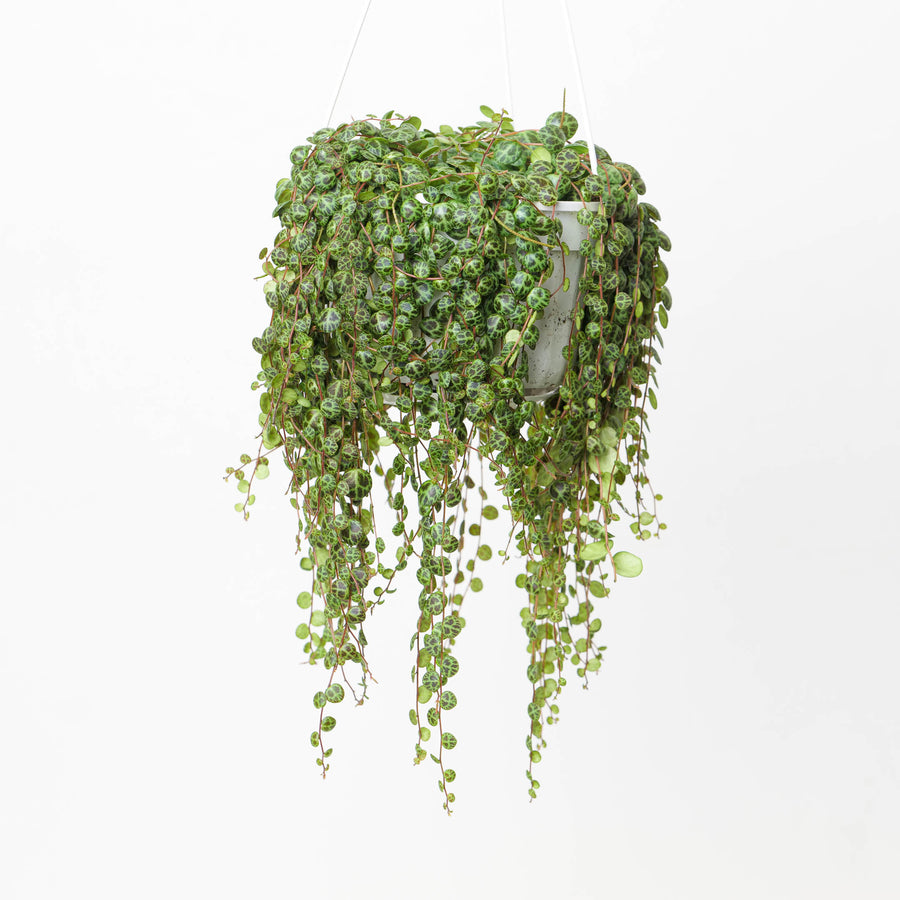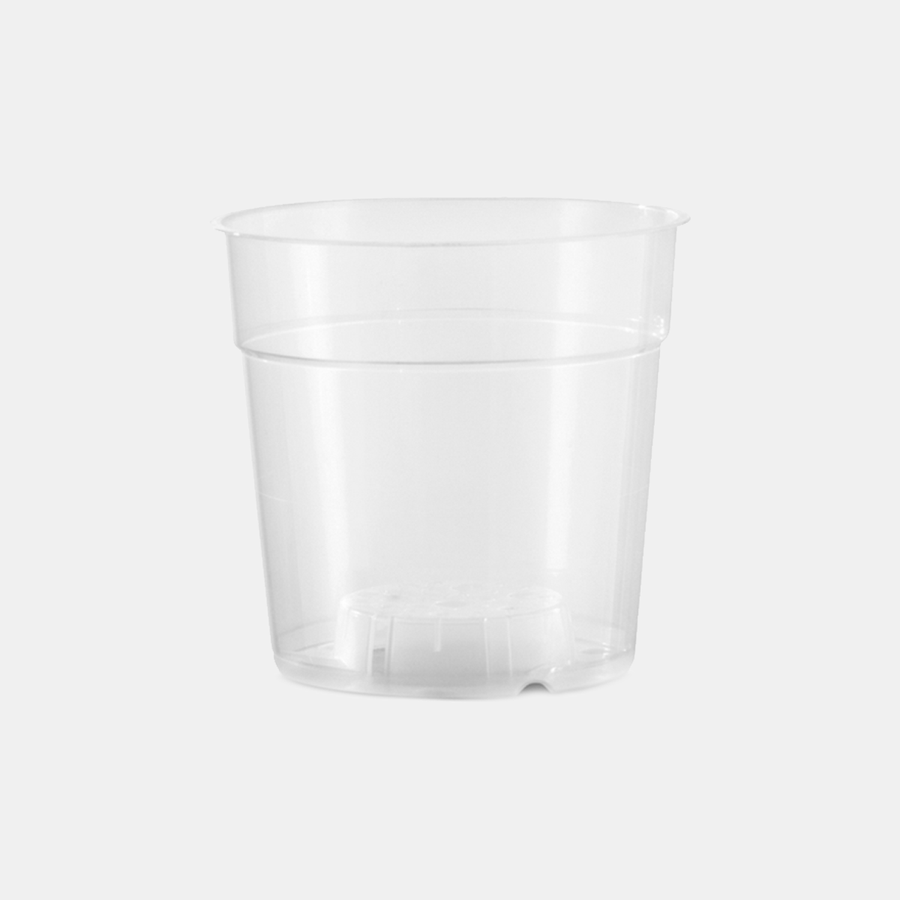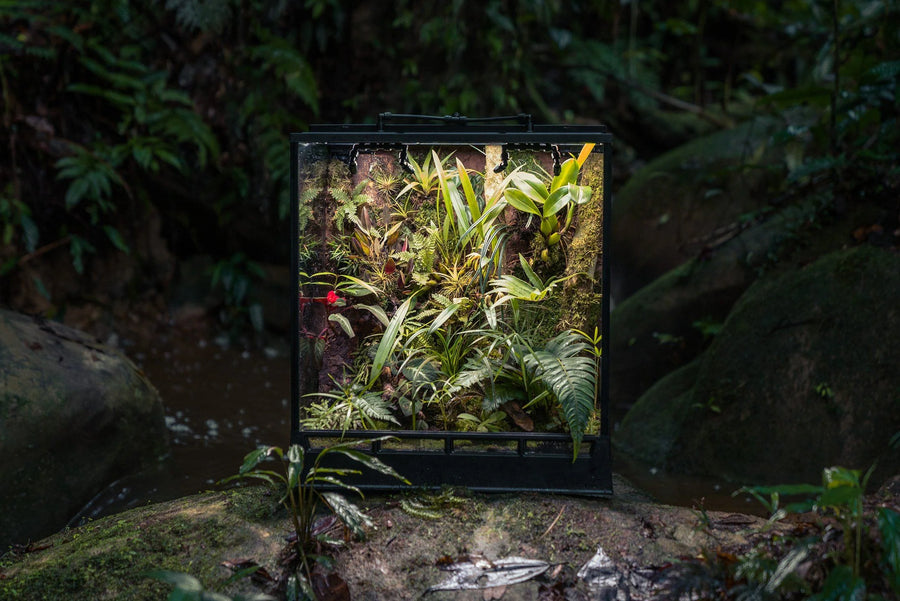Leaf Miners On Your Houseplants? Here's How to Deal With Them
Leaf miners are a common but often overlooked pest that can affect your houseplants. These tiny insect larvae live inside the leaves, creating winding tunnels as they feed on the internal tissues. While their damage may appear primarily cosmetic at first, persistent infestations can compromise the health of your plants by reducing photosynthesis and causing premature leaf drop. In this guide, we’ll explain what leaf miners are, how to spot them on your houseplants, and share effective strategies to prevent and treat infestations.

What Are Leaf Miners?
Leaf miners are the larval stage of certain insects—commonly moths, flies, or beetles—that live within the leaf tissue. As they feed, they create distinctive, winding trails or “mines” visible on the surface of the leaves. These mines can vary in colour and shape, depending on the species and the plant they infest. For houseplant enthusiasts, understanding what leaf miners are and recognising their signs is the first step towards effective pest control.
Identifying Leaf Miner Infestations
Recognising the Damage
- Tunnels and Mines: The hallmark of a leaf miner infestation is the presence of winding, discoloured trails on the leaves. These mines may appear as narrow, sinuous lines or blotchy, irregular patches where the tissue has been eaten away.
- Discolouration: Affected areas may turn yellow, brown, or even silvery, depending on the severity of the damage and the plant species.
- Reduced Leaf Quality: Over time, extensive mining can lead to distorted or weakened leaves, and in severe cases, premature leaf drop.
Inspecting Your Houseplants
- Close Examination: Use a magnifying glass to inspect the underside and surface of leaves, especially new growth where miners are likely to be active.
- Regular Checks: Integrate routine inspections into your plant care regimen to catch early signs of infestation before damage becomes extensive.
Life Cycle of Leaf Miners
Understanding the life cycle of leaf miners is essential for timing your intervention:
- Egg Stage: Adult insects lay eggs on or within the leaf surface. These eggs are often tiny and can be difficult to detect.
- Larval Stage (Leaf Miners): Once hatched, the larvae burrow into the leaf tissue, creating the characteristic mines as they feed. This stage is when most of the visible damage occurs.
- Pupal Stage: After completing their feeding, the larvae exit the mines to pupate, often in the soil or on the plant surface.
- Adult Stage: Emerging as adult insects, they continue the cycle by laying eggs, potentially leading to recurring infestations if not managed promptly.
Damage Caused by Leaf Miners
Leaf miners primarily cause cosmetic damage, but the effects can extend beyond appearance:
- Aesthetic Damage: The tunnels and discoloured areas can make your houseplants look unsightly, diminishing their visual appeal.
- Reduced Photosynthesis: Extensive mining reduces the healthy leaf tissue available for photosynthesis, which can weaken the plant over time.
- Stress and Vulnerability: Continued damage may stress the plant, making it more susceptible to secondary infections or other pests.

How to Prevent and Control Leaf Miner Infestations
Prevention Strategies
- Regular Inspection: Frequent checks are key. Early detection can prevent a minor infestation from becoming a major problem.
- Healthy Growing Conditions: Ensure your houseplants are well-cared for with proper watering, fertilisation, and adequate light. Healthy plants are more resistant to pest infestations.
- Cleanliness: Remove fallen or damaged leaves promptly to reduce hiding places for leaf miners and disrupt their life cycle.
- Quarantine New Arrivals: Isolate new plants for a few weeks before adding them to your collection to prevent introducing pests.
Treatment Options
Manual Removal and Cultural Practices
- Pruning: Remove heavily infested leaves to reduce the pest population and prevent further damage.
- Physical Removal: For small infestations, you might gently wipe the leaves with a damp cloth to remove any eggs or larvae on the surface.
Natural and Biological Controls
- Insecticidal Soap: Spraying your plants with insecticidal soap can help control leaf miners without harming the plant. Be sure to coat both the top and underside of the leaves.
- Neem Oil: A diluted neem oil solution disrupts the life cycle of leaf miners and can be an effective organic treatment.
- Beneficial Insects: In some cases, introducing natural predators like parasitic wasps can help control leaf miner populations. Although more common in outdoor or greenhouse settings, these beneficial insects can sometimes be used indoors with careful management.
Chemical Treatments
- Targeted Pesticides: If the infestation is severe, a pesticide formulated for leaf miner control may be necessary. Always follow the manufacturer’s instructions and take care to use products that are safe for indoor use.
Frequently Asked Questions (FAQ)
Q: What do leaf miners look like on houseplants?
A: Leaf miners are the larval stage of certain insects. They create narrow, winding trails or blotchy patches on the leaves, which often appear discoloured (yellow, brown, or silvery). A magnifying glass can help you spot these tiny trails.
Q: How can I get rid of leaf miners on my houseplants?
A: Start by removing affected leaves if possible. Use insecticidal soap or a neem oil spray to treat the plant thoroughly, ensuring you cover both the tops and undersides of leaves. Maintaining healthy plant care and regular inspections are key to preventing future infestations.
Q: Are leaf miners harmful to the overall health of my houseplants?
A: While leaf miners primarily cause cosmetic damage, extensive mining can reduce the photosynthetic area of the leaves, potentially weakening the plant over time. Early intervention usually prevents severe damage.
Q: How do leaf miners complete their life cycle?
A: Adult insects lay eggs on the leaves, which hatch into larvae that create the mines as they feed. After feeding, the larvae leave the mines to pupate, eventually emerging as adults to repeat the cycle. Interrupting this cycle early is crucial to effective control.
Q: Can I use natural methods to control leaf miners?
A: Yes, natural methods such as insecticidal soap, neem oil, and even introducing beneficial insects can help manage leaf miner infestations. Maintaining healthy growing conditions and proper plant hygiene also plays a significant role in prevention.
Conclusion
Leaf miners on houseplants can diminish both the appearance and vitality of your beloved plants. By understanding their life cycle, recognising the telltale signs of infestation, and employing a mix of preventative and treatment strategies—from manual removal and natural sprays to, if needed, targeted chemical treatments—you can protect your indoor garden from these stealthy pests. Regular monitoring and proactive care are essential to keeping your houseplants thriving and free of leaf miner damage.
Happy planting, and here’s to a healthy, pest-free houseplant collection!






